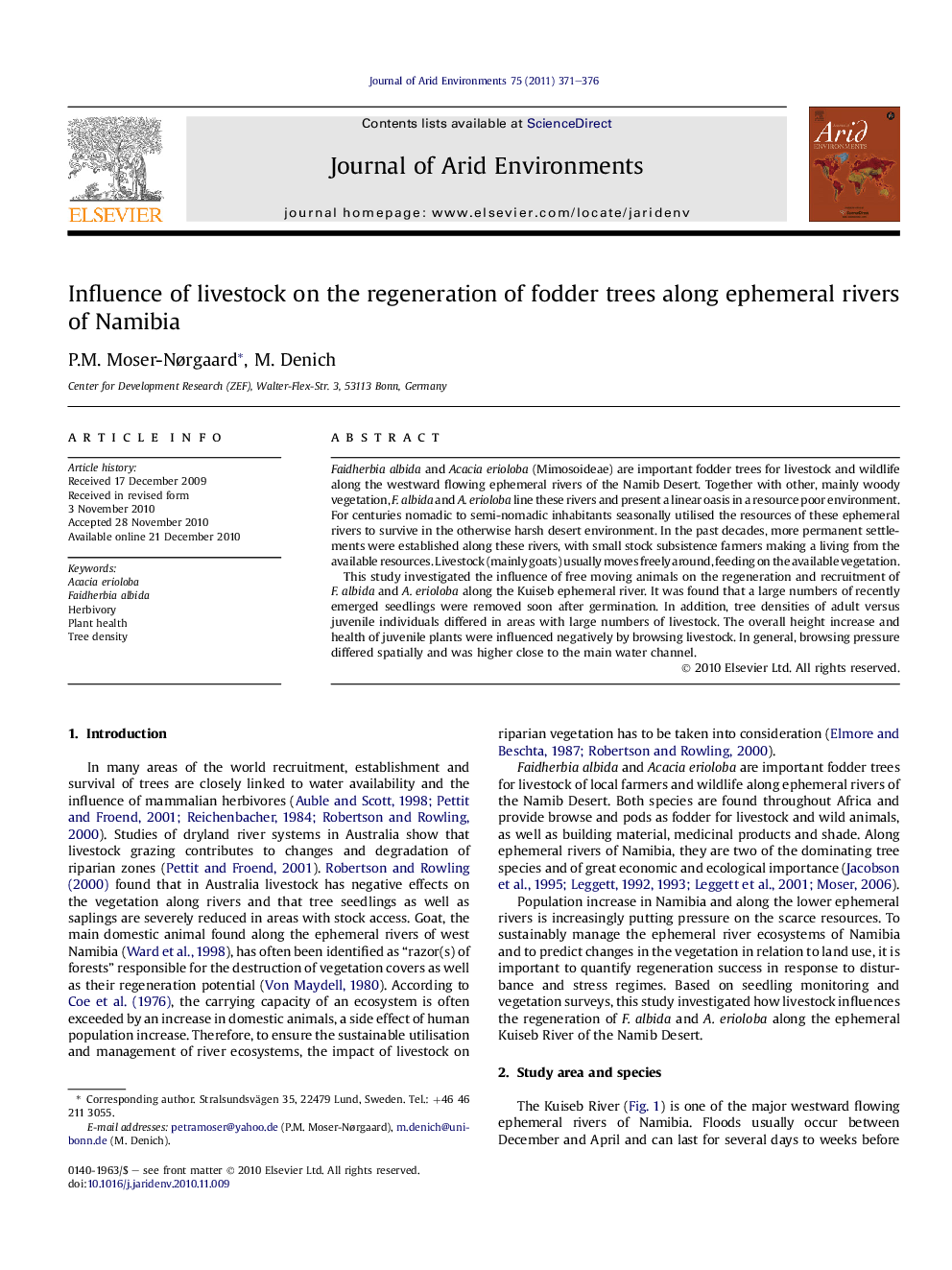| Article ID | Journal | Published Year | Pages | File Type |
|---|---|---|---|---|
| 6303716 | Journal of Arid Environments | 2011 | 6 Pages |
Faidherbia albida and Acacia erioloba (Mimosoideae) are important fodder trees for livestock and wildlife along the westward flowing ephemeral rivers of the Namib Desert. Together with other, mainly woody vegetation, F. albida and A. erioloba line these rivers and present a linear oasis in a resource poor environment. For centuries nomadic to semi-nomadic inhabitants seasonally utilised the resources of these ephemeral rivers to survive in the otherwise harsh desert environment. In the past decades, more permanent settlements were established along these rivers, with small stock subsistence farmers making a living from the available resources. Livestock (mainly goats) usually moves freely around, feeding on the available vegetation.This study investigated the influence of free moving animals on the regeneration and recruitment of F. albida and A. erioloba along the Kuiseb ephemeral river. It was found that a large numbers of recently emerged seedlings were removed soon after germination. In addition, tree densities of adult versus juvenile individuals differed in areas with large numbers of livestock. The overall height increase and health of juvenile plants were influenced negatively by browsing livestock. In general, browsing pressure differed spatially and was higher close to the main water channel.
Research highlights⺠Livestock influence on regeneration and recruitment of Faidherbia albida and Acacia erioloba. ⺠Exclosure experiments, plant health assessment and height increase measurements. ⺠Newly emerged seedlings are removed by livestock. ⺠Browsing influences plant health and height.
